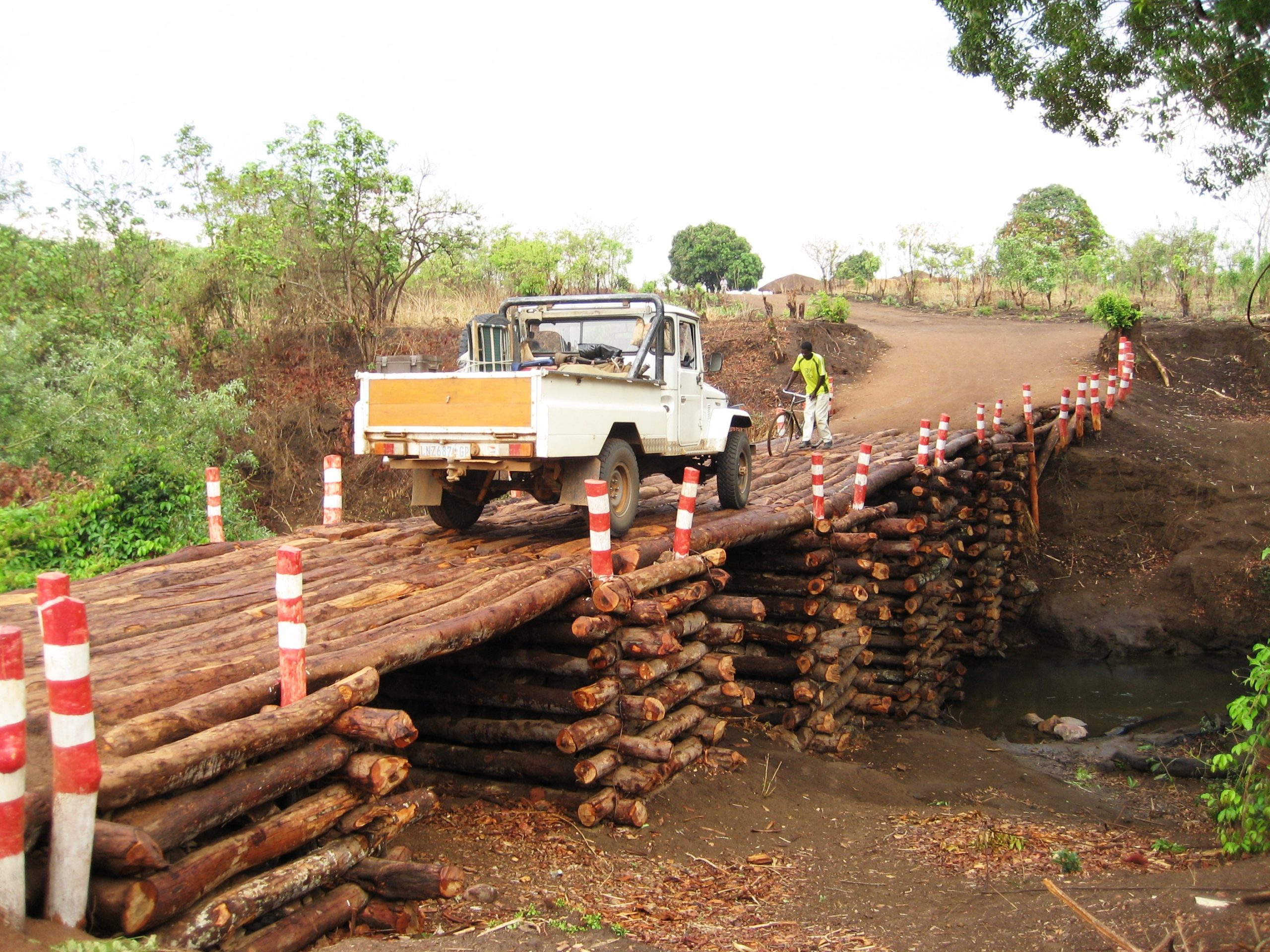Journeys back.
Slowly the wilderness is taking on more and more of the hues of civilisation – but still so enchantingly “wilderness.”
From an engineering perspective, volumes can be written about this splendid embodiment of bush engineering – from a poetic perspective too, and from a philosophical one, and, well it simply saturates one’s mind with feelings of wonder, sadness, admiration, empathy, irony, to the point where one’s capacity to verbally do justice to it and its context is overcome.
Let me try to convey to you the thoughts that stormed my mind as I listened to old Kgalilaga explain that it was the result of a community project, triggered by the opening ceremony of the border post between Mozambique and Tanzania some hundred kilometres of tortuous rattling further north.
Just try to imagine the many log-seated circles of etched faces topped with dustings of grey that had gathered to debate “the problem of the ravine.” The slow taking of seats, much later than scheduled, no doubt; the voices, some crackly, like old paper, some deep like far thunder, some timid, some bold – distressingly bold, sometimes; the looking-away(s), the mutterings, the nods, the “eh”-s, the bored doodling with sticks between the feet, the sketches in the sand, the slow rises and stretches and goodbyes and shuffling away(s), till next time.
Then, finally the men heading into the bush, some with small parcels of food for the day – cold porridge in a plastic bag, most likely – a few with axes, most just with machetes, perhaps a plastic “to lita” bottle filled with water; to chop and trim and debark and chop once more, to length, hundreds of trees, selected for sturdiness and straightness, many, far away. And the haulers, trudging for hours with rough logs on their shoulders to the place where the ravine so disdainfully slashed through the road. And there, the constructers. A loudly chatting, gesticulating, carrying, chopping, placing, sweating swarm, seemingly chaotic. The whole happening probably was akin to a colony of ants.
Very little digging and levelling of the ground was done. Most of the slope was taken up by logs piled on the down sides. This made practical sense, with almost no ground breaking and levelling tools at their disposal. It (possibly coincidentally) made engineering sense too. They could not compact or otherwise stabilise the ground, so the natural surface was really their best option for underfoot strength. Even in the stream bed (now, in the dry seasons mercifully a mere trickle), (the thickest and heaviest) logs were placed right on the sandy bed.
Each log was individually measured, notched and placed, with almost no tie-down; just a forlorn piece of wire here and there, very loosely fastened. Judging from the generally approximate alignment, no measuring tools were used either – other than “Eye-ball Mark-1.”
And gradually, they brought it up to reasonable (no doubt the subject of much loud debate) alignment with the road surfaces on either side. The deck was next – longitudinally placed logs of special straightness and length. Note the uprights, planted in the corners at the bottom of each “pylon” stack and sticking out at the top, to help (together with some wire again), to hold the deck logs in place transversely.
The uprights also served the important purpose of guiding traffic around the curve leading to the structure and then across, and for this purpose they were brightly adorned in red and white – best not ask where the paint came from.
And so, this structure came to be. It would probably not survive much beyond the first thunderstorm and the quick rush of water down the ravine, but it is highly flexible, and it may at first just sag a little where the water had washed the footing from under some logs, and twist a bit, where a pylon had shifted. But it might still, creaking loudly, accommodate the bolder of the few drivers that brought their vehicles here. But it would not be maintained, and eventually Nature would win, even if it was a dry season with no fast run-off, and the white ants had their slow way with the wood, from the bottom up. Then, a ford would be found, and laboriously navigated by even fewer drivers that came here – or perhaps they would no longer come, and the new border post would be for bicycles and pedestrians, rowed across the Ruvuma in dug-out canoes.
But for now, it stands as a beautiful achievement in pragmatic bush engineering and a wonder in many aspects – visual pleasure, convenience, pride, resilience, ingenuity, endeavour, persistence, hard work; and as a sad metaphor of Africa and its ongoing rub against civilisation.


Never seen this picture or remember you telling this story. Unbelievable! Sad thing is that – unlike yourself – most newcomers probably just drive across it completely oblivious or incapable of appreciating the story unfolding beneath their vehicle’s wheels. At least some of your fortunate blog readers have the chance to experience and appreciate – albeit second-hand – thanks to your initial curiosity and imaginative writing :)